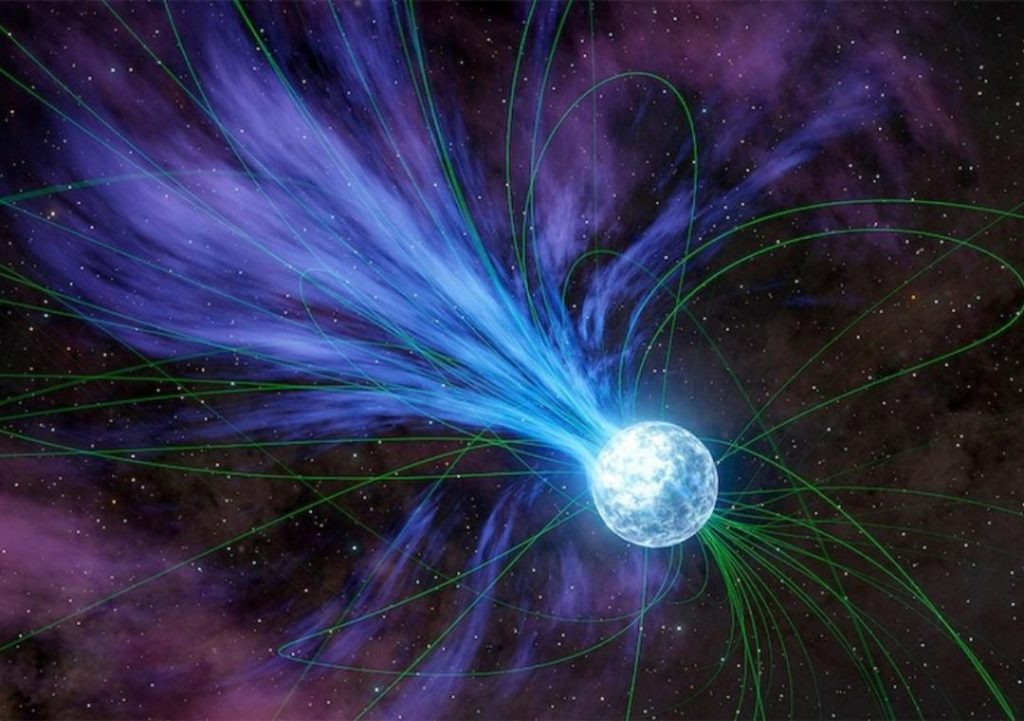
Gold & Platinum Created through Neutron Stars’ Explosions: Study
The origin of precious metals like gold and platinum has long been a topic of fascination for scientists and treasure hunters alike. While we’ve always known that these metals are formed through a process involving stars, the exact mechanism has remained a mystery. However, a recent study led by Columbia University student Anirudh Patel has shed new light on the subject, revealing that magnetars or highly magnetized neutron stars played a crucial role in creating these elements.
The study, published in the journal Nature, suggests that magnetars exploded and released flares that contained gold and platinum. These explosions occur approximately once per decade in the Milky Way and annually across the observable universe.
The discovery was made possible through the analysis of data from NASA’s Fermi Gamma-Ray Space Telescope. By studying the radiation patterns emitted by magnetars during their explosions, scientists were able to identify the presence of these precious metals.
“The idea that magnetars could create gold and platinum through their explosions is not new,” said Patel. “However, our study provides the first direct evidence of this process occurring in the universe.”
So, how exactly do magnetars create gold and platinum? The process begins when a massive star runs out of fuel and collapses in on itself, causing a massive explosion known as a supernova. If the star is massive enough, it will collapse into a neutron star, which is an incredibly dense object that is only a few kilometers in diameter.
Magnetars are a type of neutron star that is characterized by its extremely strong magnetic field. This field is so powerful that it can cause the star to release massive amounts of energy in the form of gamma-ray bursts.
When a magnetar explodes, it releases a massive amount of energy in the form of radiation, including gamma rays and X-rays. This radiation is capable of creating the elements gold and platinum through a process known as nucleosynthesis.
Nucleosynthesis is the process by which atomic nuclei are created. In the case of gold and platinum, this process involves the fusion of atomic nuclei in the intense heat and radiation of the magnetar’s explosion.
The study found that the explosions of magnetars are capable of producing large amounts of gold and platinum, which are then dispersed into space. Over time, these elements can be incorporated into new stars and planets, including our own.
The implications of this study are far-reaching. For one, it provides a new explanation for the origin of precious metals like gold and platinum. It also suggests that these elements may be more common in the universe than previously thought.
In addition, the study highlights the importance of magnetars in the creation of these elements. Magnetars are incredibly rare objects, and their explosions are capable of releasing massive amounts of energy into space.
The study also has implications for our understanding of the universe as a whole. It suggests that the universe is capable of creating the elements we need to support life, and that these elements may be more common than we previously thought.
In conclusion, the study of magnetars and their role in the creation of gold and platinum is a fascinating one. It provides a new explanation for the origin of these precious metals and highlights the importance of magnetars in the creation of the elements we need to support life.
As we continue to explore the universe and learn more about the mysteries of the cosmos, we may uncover even more surprising facts about the origin of the elements we need to survive. One thing is certain, however: the universe is full of surprises, and the discovery of magnetars’ role in creating gold and platinum is just the latest example of its incredible complexity and beauty.






